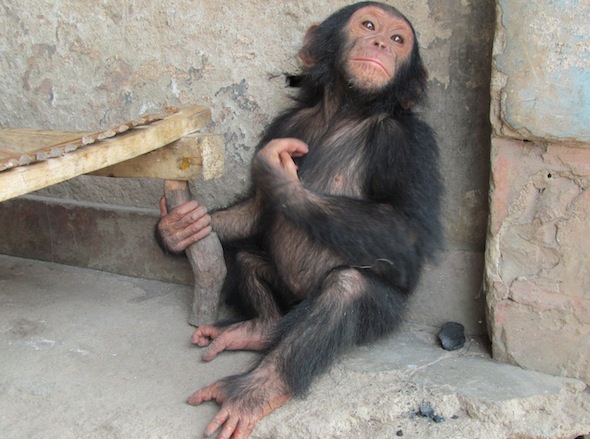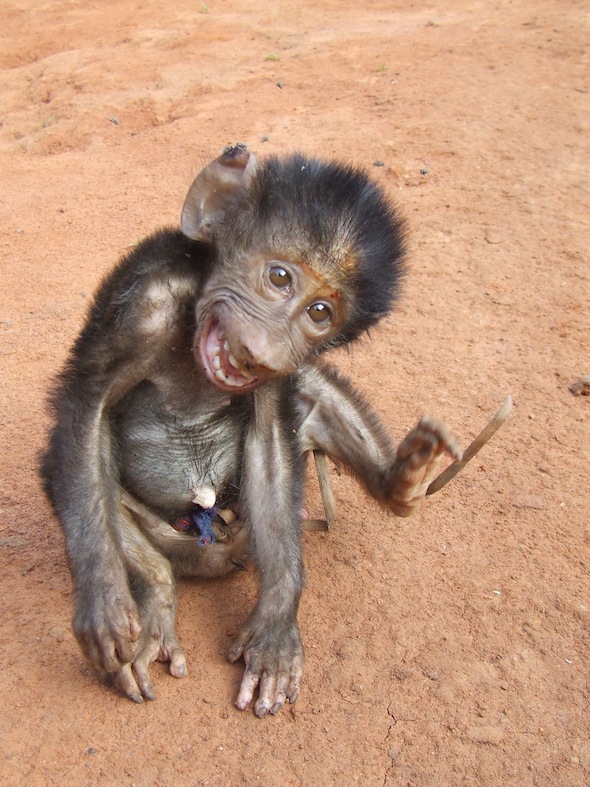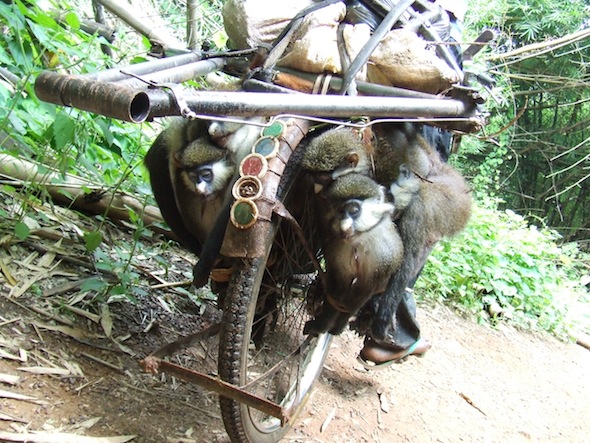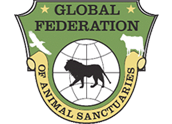This is the second installment of a series of posts from Dr. Cleve Hicks. Cleve did his PhD research in the DRC studying chimps in the Bili Forest. Read Part 1 of this story about some of his experiences here. WARNING: some disturbing images are included in this entry.
—
I was encouraged to see that a strong ICCN contingent of 20 Ecoguards was now installed inside Rubi-Tele, actively arresting poachers and confiscating bushmeat. Another twenty guards were scheduled to join them soon. This team patrols the forests of the reserve during the first three weeks of every month, and then on the last week they pass through the roadside villages down the highway bisecting the game reserve. Together with the road block erected at Sukisa, we can hope that these patrols will make a difference for the embattled wildlife of these forests. On this trip I counted the carcasses of 15 monkeys on the road between Kisangani and the southern border of Rubi-Tele. Of the four un-smoked carcasses we could identify to species, three were red tailed guenons and one was a red colobus; we also saw two hornbills, an African civet, a turacao, and a duiker for sale. Encouragingly, inside the Rubi-Tele reserve, we saw no primate carcasses, save for one cast-aside monkey tooth next to a village hearth 12 km south of Buta Town. We also saw the fresh carcass of a duiker pass us on a bike.
If enough chimpanzees in the far corners of the reserve have managed to survive the poaching onslaught of the last decade, Rubi-Tele might provide us with a convenient research base, being close to village markets and protected by guards. I also hope that it might serve as an ICCN spearhead into the more remote reaches of northern DRC, in particular, into the much larger and less-disturbed Bili-Uéré Domaine de Chasse. Our team of six guards, I hope, will be the vanguard of that movement.
The next day, our goal was to reach Buta Town by nightfall. From our caravan of motorbikes, we held our breath as we watched the Nissan catapult across the 35 km warren of mud pits separating Sukisa from Buta. It seemed a miracle that Karsten’s delicate camera traps survived the truck’s repeated lurching out of one rut and down into the next.
Our entry into Buta Town was heralded by a conflict between our ICCN guards and the local military police, who were stationed at the Rubi River Bridge. In order to avoid confusion, Henri had planned that our phalanx of vehicles would cross the city bridge together, but as the Nissan forged ahead onto the bridge, at the last minute one of our of motorbikes stalled. Pichou the wily mechanic leaped off our bike and in a flash fixed the problem. The motorbike’s engine revved, and we sped across the bridge in the wake of the truck, but it was too late. The military police (MPs), confronted with a truck-full of armed Ecoguards, were irate that they had not been informed of our mission by a ‘responsable’. As usual, it didn’t matter at all that we had sent an advance message to the Buta authorities. We pulled up to the check-point, into what was rapidly developing into a tense stand-off. Our hired driver was yelling at the MPs, and the MPs and the Ecoguards were shouting and posturing angrily at each one another. Henri ably stepped to the side of the road with the head of the border police and explained the purpose of our mission and the reason we had not all arrived all at one time, while I hung back to diffuse a heated argument between an Ecoguard and an MP. Thanks to Henri’s diplomatic skills, we made it through the checkpoint with little more than a case of frayed nerves.
The rest of our stay in Buta went pretty smoothly, all things considered. The next day, Karsten, Henri, Ephrem, and I made the rounds to visit the important regional authorities: CDD, DGM, ATAR, and ANR. The reception we received was remarkably warm and polite compared to my visit in 2008, a testimony to the professionalism of the TL2 Lukuru Team and the respect with which the ICCN is accorded within the Congo. One thing that struck me as ominous, however, was the large herd of long-horned cattle and asses grazing the lawns of the governmental center; this livestock had undoubtedly been purchased from Mbororo traders. The nomadic Mbororo herders, originally from Mali, are currently migrating in a north-south wave across Northern DRC, with devastating effects on the local fauna. Native ungulates are replaced by cattle, savannahs are burned at the wrong time of year, and lions and other big cats are poisoned to keep them from preying on the domesticated herds. The Mbororo also frequently enter into aggressive conflicts with the local Congolese they meet. Clearly though, by selling cattle to Congolese merchants and authorities they are also now financially entrenched into the economy of Northern DRC.
The following day, Henri accompanied our ICCN guards to meet with the head of the Buta police as well as the regional commandant of the FARDC, the Congolese military, to arrange for our guards’ permission to work at Bili. This also went quite well… but as a reminder of how far we have to go in spreading our conservation ideals into this area, the commandant proudly introduced Henri and Ephrem to his pet orphan chimpanzee ‘Jaques de Bondo’, which he had acquired from the Bondo region to the north of the Uele River. Ephrem snapped the following photograph of the pitiable orphan:
Jaques de Bondo, a chimpanzee orphan kept by a high-ranking military official in Buta. Photo © Ephrem Mpaka.
(Recall from Hicks et al. 2010 that 25% of the chimpanzee orphans in this region belonged to military, police, or government officials / traditional authorities).
During our five days at Buta we saw a captive baboon, a patas monkey (from the Ango savannas to the northeast), and a guereza colobus monkey, as well as a key chain made from a forest buffalo tail. Little had changed in the four years since I was last here.
The next leg of our voyage, between Buta and the bucolic old colonial town of Titule, was impassable by truck; we returned our rented Nissan to Kisangani and loaded all of our supplies onto bicycles and motorbikes. Along the 130 kilometers of untamed boggy road between Buta and Titule, I counted the carcasses of 12 red-tailed guenons and one Dent’s monkey passing us on bicycles or offered for sale by the roadside, along with one duiker. In one tiny village we spotted two forlorn primate orphans which had been captured from the surrounding forests, an agile mangabey and a baboon. The baboon darted around nervously as we arrived to investigate, and was sniffed at and nuzzled by a number of village dogs. We struggled to communicate to the village patriarch why it was dangerous, unethical, and even foolhardy to keep primates as pets. This section of road remained a veritable bushmeat highway.
Primate orphan and bushmeat encountered along the Buta-Titule Road.
TO BE CONTINUED…
Along the Bushmeat Highway: Part 1
Along the Bushmeat Highway: Part 3
Also by Dr. Cleve Hicks, The FARDC ‘Petting Zoo’ at Bili
This mission was made possible by the generous support of the Max Planck institute for Evolutionary Anthropology, The Lukuru Wildlife Research Foundation, The US Fish and Wildlife Service, l’ Institut Congolais pour la Conservation de la Nature, The Lucie Burgers Foundation, and The African Wildife Foundation.
Works cited:
Hicks TC, Darby L, Hart J, Swinkels J, January N, Menken SBJ. 2010. Trade in orphans and bushmeat threatens one of The Democratic Republic of the Congo’s most important populations of Eastern Chimpanzees (Pan troglodytes schweinfurthii). African Primates 7 (1): 1-18.
